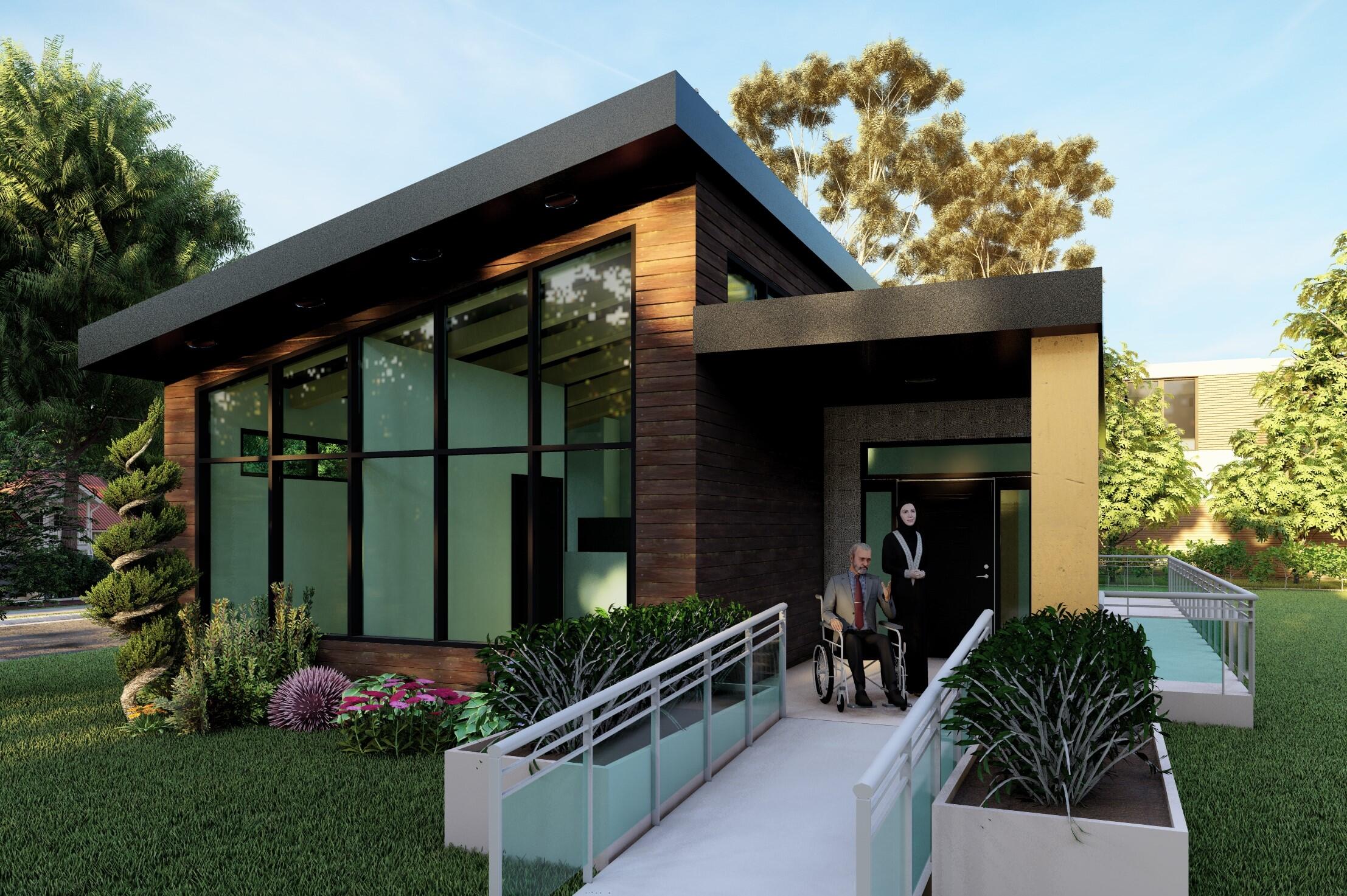Conestoga Architecture - Construction Engineering Technology (ACET) student Tamara Bell placed first in an industry design competition in support of an urban planning initiative through the City of Kitchener.

ACET student Tamara Bell’s Welcome Home to Accessibility design placed first in the post-secondary category of the City of Kitchener’s Backyard Homes Design Competition.
The Backyard Homes Design Competition called on industry professionals and students living and working in the city to submit building and site designs for a standalone additional dwelling unit to be built within the rear yard of a low-rise residential parcel of land currently occupied by a single-detached home or duplex. Designs were expected to follow the city's zoning criteria and consider user experience, equity, affordability and sustainability while delivering high quality architecture and urban design. Bell was recognized for her submission, Welcome Home to Accessibility, in the post-secondary category.
"Before I entered the ACET program, I worked as a paramedic for ten years and I would notice how poorly some homes were designed," said Bell. "This was particularly true for people who had changes in their mobility - people who had lived in their homes for decades, now were unable to reach parts of their home because of stairs or tight doorways. I would think to myself, this should be wider or brighter or more open and it would make this person's day-to-day life so much better. A space can really change your mental health or well-being."
Bell's design is a modern 72 square meter single-storey dwelling, with zero-step entry and generous floor space to accommodate various abilities brought on by changes in a resident's mobility. The home features Canadian-made cork flooring to provide a soft, non-slip surface and cushion in the event of a fall; full-height triple glazed windows to allow natural light for thermal and acoustic performance; aluminum cladding made from 70 per cent recycled materials for a modern finish; and a single-sloped roof with reflective solar shingles to reduce solar energy absorption. The design also includes an AODA compliant floor plan; well-lit living area to avoid trips and falls; power-operated front door with an integrated call system to dial 911 and unlock for first responders; and voice-controlled lighting, blinds and thermostat to enable users of all abilities.
Supported by her professors, Bell entered the competition to enhance design skills and align with career goals. She chose the ACET program when she decided to go back to school to focus on accessible building design and continue helping people in their time of need.
"I feel really passionate about accessible design for well-being and I am proud this recognition brings awareness to it," said Bell. "I'm proud my design was chosen. My professors expect nothing less than 110 per cent, and it's pushed me to show that I have what it takes."
In April, the City of Kitchener introduced new zoning that would allow tiny homes to be built in backyards in an effort to help stimulate and accommodate the city's growth and make owning and renting a home in downtown Kitchener more affordable. The Backyard Homes Design Competition was launched over the summer to help generate awareness of the change. Last year, students in Conestoga's Bachelor of Applied Technology - Architecture - Project and Facility Management program helped test the parameters of the then-proposed zoning as well as the design competition.
"I think the City of Kitchener allowing people to build homes in their backyard is a great way to help reduce the burden of housing costs on young people or people who would like to live close to a relative for supportive reasons," Bell continued. "As a paramedic, I often see multi-generational families living together in homes that are not big enough. With housing becoming more and more expensive, people are forced to live in cramped conditions. Building a secondary home on their property will allow loved ones to have dignity and independence while still being supported."
As part of her recognition, Bell received a monetary award and will see her design featured in a publication by the City of Kitchener, freely available to those interested in building a backyard home. Two teams of Conestoga Bachelor of Interior Design students were also named among honourable mentions in the post-secondary category. Carry Gilbert, Shelby Heisch, Isabelle Rousseau, Azeza Muhammad, Natasha Quacquarelli and Emma D'arcy, also received monetary awards and will feature in the publication.
Conestoga's three-year ACET program gives students broad and thorough training in all phases of the building industry, including industry standards and working conditions. Challenging projects encompass building design, building performance, working drawings, building systems, universal design, building science, sustainability, and renewable energy. The Ontario Association of Certified Engineering Technicians and Technologists (OACETT) conditionally recognizes this program as meeting all the academic requirements for certification in the Certified Engineering Technologist (CET) category.
